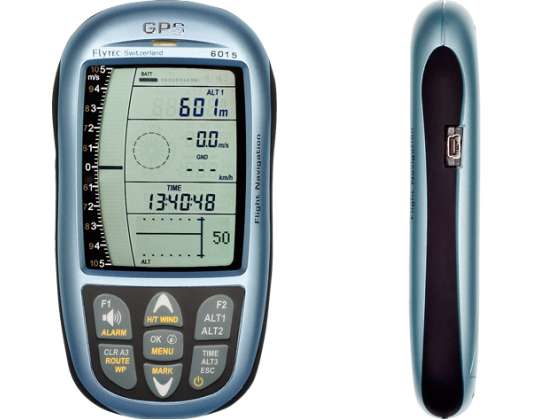|
Author Pilot profile April 2016 April 2016
CSC note: Brauniger is now Flytec and the Flytec 6015 is the same instrument as the Brauniger IQ Basic/GPS
1. identify your waypoints - you'll need two for a flight to goal, two for an O&R, and three for a triangle. I use XC planner to get waypoints. 2. enter all waypoints into the machine, either by uploading them from GPSDump or, if you're on the side of the hill and someone has shared their declare with you, manually via the menus. 3. delete any Route that may already be set in the instrument. 4. Enter your declare as a Route. For a FTG you MUST enter the start and goal, for an O&R you must enter the start, TP and goal (obviously start and goal are the same waypoint), and for an FAI triangle you must enter the start, two TPs and goal. You can't declare a flat triangle. See the XC league rules pages for more details. 5. Activate the route. THIS IS VITAL. Scroll through the info screens with the up/down arrows - if you haven't got a page telling you distance to goal and distance to next cylinder, your route is not active (or, possibly, your GPS hasn't got a grip yet). Note that if you activate the route and switch the instrument off, it will still be active when you switch it back on - so theoretically at least you can do ALL of this the night before and just turn up, switch on and fly. See point (6) below, though. When you take off, it will direct you to the first turnpoint. If you've set the turnpoint so you're inside it at launch, you'll get a little "diddleyboop" noise right away, and it'll direct you to the next TP. Each time you cross into a cylinder, you'll get a "diddleyboop" noise, and when you get to goal you'll get a little smiley face on the screen.
2. remember cylinder deductions: 0.8km for FTG and O&R, and a whopping 2.4km for triangles. So for a qualifying FTG your actual waypoint centres must be at least 25.8km apart. (Getting this wrong cost me about 4 points on my very first "successful" declared flight. See here: http://www.xcleague.com/xc/flights/20121602.html?vx=0111 3. don't put any other waypoints in your Route, just your official declare turnpoints. Don't (for instance) try declaring a flight to goal with a turnpoint in the middle of it that helps you navigate round a bit of airspace. FTGs must have exactly two turnpoints - start and goal. Any others you put in the route will invalidate the declare. If you must navigate round something, find another way to do it. 4. remember the height loss rule for loop flights, and tag your start cylinder low. See here: http://www.xcleague.com/xc/flights/20151307.html?vx=0111 5. Text the declare in as well, and never give up. I put a declare from Parlick into my instrument last week, flew around for an hour and a half, and got discouraged and thought I wasn't going to get away. So I top landed, cancelled it, and put the Parlick grid challenge in instead. And then I did this: http://www.xcleague.com/xc/flights/2016526.html My eighth best scoring flight ever - but it would have been my fifth best if I'd either texted it in or not given up. I made it to my goal, but didn't get the bonus because the route wasn't active and I hadn't texted in! 6. Do NOT launch until your instrument has acquired GPS signal, otherwise the tracklog won't be valid. Switch the thing on before you take the glider out of the stuffsack/concertina bag. I nearly made this mistake in the flight above. 7. when you download the flight off the instrument into GPSDump, use "Save IGC log from GPS", NOT "Save log" or "Save log in IGC format". Only by using "Save IGC log from GPS" will you get the full info from the GPS including the C-records. Inspect the file in notepad or other text editor - you should see something like this at the top: Those lines I've made bold italic are where the money is - that's your declare, encoded in the signed IGC file. Hope this information is of use.
|
|
|---|---|---|


